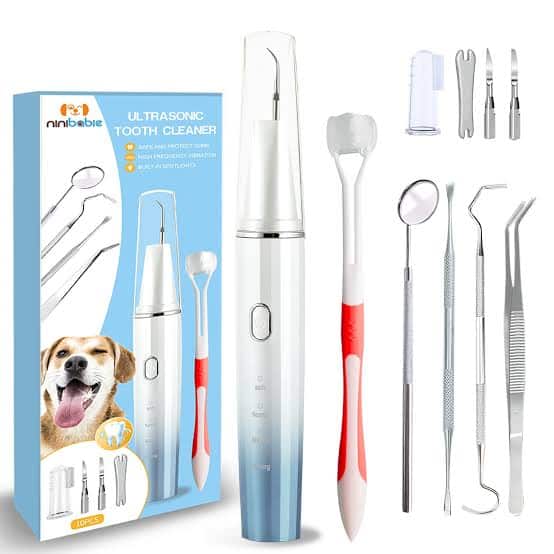Welcome to the definitive guide on canine dental care – “The Ultimate Dog Tooth Brushing Kit: A Professional’s Guide To A Cleaner Canine Smile.” Uncover the secrets to maintaining your pet’s oral health as we look into expert tips, recommended tools, and a step-by-step approach that promises a brighter, healthier smile for your beloved pet.
Get ready to embark on a journey towards a happier and healthier life for your canine companion.
Understanding Dog Dental Health
Maintaining optimal dental health is crucial for our furry companions, and one of the key elements in achieving this is understanding the nuances of dog dental care. Just like humans, dogs can suffer from various dental issues that can lead to discomfort, bad breath, and even more severe health problems. Enter the dog tooth brushing kit – a valuable asset in the pursuit of optimal dental hygiene for your canine companion.
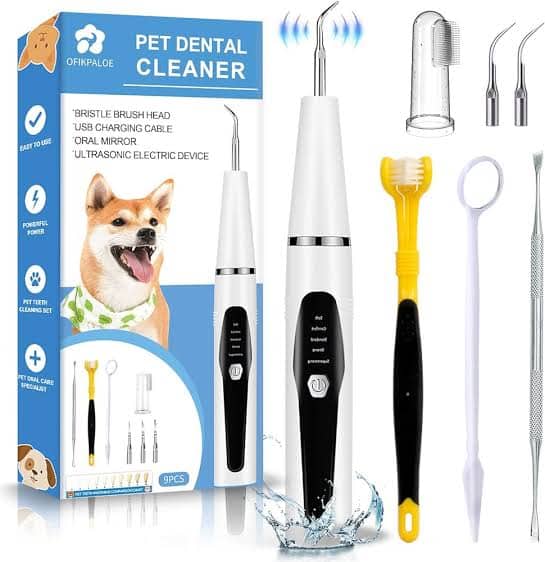
Common Dental Issues In Dogs
In this segment, we’ll explore common dental problems in dogs and offer insights into prevention and treatment.
Periodontal Disease:
One of the most prevalent dental issues in dogs is periodontal disease.
Caused by the buildup of plaque and tartar, it can lead to gum inflammation, tooth loss, and even affect vital organs.
Bad Breath (Halitosis):
Persistent bad breath is often a sign of dental problems in dogs.
It can indicate issues like gum disease, infections, or the presence of oral bacteria.
Tooth Fractures:
Dogs can experience tooth fractures due to chewing on hard objects or trauma.
Fractures may expose sensitive dental pulp, causing pain and potential infection.
Misalignment and Overcrowding:
Some dog breeds are prone to dental misalignment or overcrowded teeth.
These issues may lead to plaque accumulation and difficulty in proper cleaning.
Oral Tumors:
Though less common, dogs can develop oral tumors.
Regular dental check-ups help detect abnormalities early, improving treatment outcomes.
Prevention And Maintenance Tips
- Regular Brushing: Establish a routine for brushing your dog’s teeth using pet-friendly toothpaste.
- Dental Chews and Toys: Provide dental-friendly treats and toys to promote natural chewing, reducing plaque.
- Balanced Diet: Feed your dog a well-balanced diet that supports dental health.
- Regular Veterinary Check-ups: Schedule routine dental examinations with your veterinarian to catch issues early.
Treatment Options
- Professional Dental Cleaning: Veterinarians can perform thorough dental cleanings to remove plaque and tartar.
- Tooth Extractions: In severe cases, extracting damaged or infected teeth may be necessary.
- Medication: Antibiotics or other medications may be prescribed to address infections.
Components Of The Ultimate Dog Tooth Brushing Kit
Maintaining your canine companion’s oral health is crucial for their overall well-being. A comprehensive dog tooth brushing kit is essential for this task. Here are the key components that make up the ultimate kit:
Canine-Friendly Toothbrush: Choose a toothbrush specifically designed for dogs. These brushes often have softer bristles and a size suitable for your dog’s mouth. Opt for one with an angled head to easily reach all areas.
Dog Toothpaste: Dog-friendly toothpaste is a must. Human toothpaste contains ingredients that can be harmful to dogs. Look for enzymatic toothpaste designed to reduce plaque and tartar buildup. Popular flavors like poultry or beef can make the experience more enjoyable for your furry friend.
Dental Chews or Toys: Incorporate dental chews or toys into your kit. These items can assist in maintaining oral health between brushings by promoting chewing, which helps reduce plaque and tartar. Look for products approved by veterinary professionals.
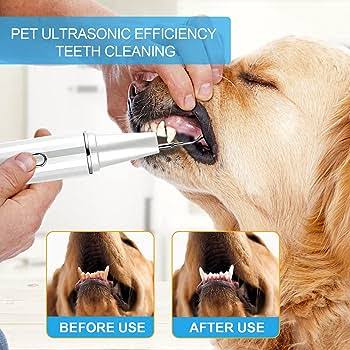
Step-By-Step Guide To Proper Dog Tooth Brushing
Proper dog tooth brushing is crucial for maintaining your furry friend’s oral health. In this step-by-step guide, we’ll walk you through the process using the essential components of the ultimate Dog Tooth Brushing Kit.
Step 1
Gather Your Dog Tooth Brushing Kit Start by assembling your Dog Tooth Brushing Kit, including a canine-friendly toothbrush, dog toothpaste, finger brush or dental wipes, dental chews or toys, dental spray or water additive, and gauze or dental pads. Having all these components ready ensures a smooth and effective brushing routine.
Step 2
Introduce Your Dog to the Toothbrush Familiarize your dog with the toothbrush by letting them sniff and lick it. This helps in reducing any anxiety or resistance during the actual brushing. Positive reinforcement, such as treats and praise, can create a positive association with the toothbrush.
Step 3
Apply Dog Toothpaste Using the canine-friendly toothpaste from your kit, apply a small amount to the toothbrush. Ensure the toothpaste is appealing to your dog with flavors like poultry or beef. This step not only enhances the brushing experience but also encourages your dog to enjoy the process.
Step 4
Choose the Right Brushing Technique Hold the toothbrush at a 45-degree angle and gently brush your dog’s teeth in a circular motion. Concentrate on the outer surfaces, as this is where plaque and tartar tend to accumulate. Gradually increase the time spent brushing as your dog becomes more comfortable with the routine.
Step 5
Use Alternatives for Comfort If your dog is uneasy with the toothbrush, consider using a finger brush or dental wipes from your kit. These alternatives provide a gentler approach, ensuring your dog’s comfort while still promoting effective dental care.
Step 6
Incorporate Dental Chews or Toys Between brushing sessions, offer dental chews or toys from your kit. These help reduce plaque and tartar buildup, serving as a supplement to your regular brushing routine. Choose products recommended by veterinarians for optimal oral health benefits.
Step 7
Enhance Oral Hygiene with Dental Spray or Water Additive Integrate dental spray or water additive into your dog’s routine. These products, included in your kit, contribute to reducing bacteria and maintaining fresh breath. Follow the recommended usage instructions for the best results.
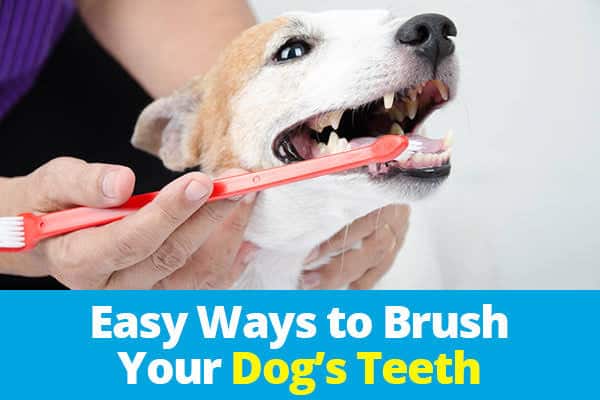
Factors To Consider When Choosing The Right Dog Tooth Brushing Kit
Maintaining your furry friend’s oral health is crucial for their overall well-being. A key aspect of canine dental care is regular tooth brushing, and selecting the right dog tooth brushing kit is essential. Here are several factors to consider to ensure you make an informed decision.
Size and Bristle Type
Dogs come in various shapes and sizes, and so do their mouths. Choose a toothbrush that is appropriately sized for your dog’s breed and mouth. Additionally, consider the bristle type – soft bristles are generally recommended to prevent irritation to your pet’s gums.
Handle Design
Opt for a toothbrush with an ergonomic handle that provides a comfortable grip. This is particularly important as it will make the brushing process easier for both you and your dog. A slip-resistant handle is beneficial, especially if your dog tends to be fidgety during brushing sessions.
Toothpaste Selection
Not all toothpaste is suitable for dogs, as some human toothpaste contains ingredients that can be harmful to them. Look for dog-specific toothpaste in flavors that appeal to your pet. This will make the experience more enjoyable and encourage regular brushing.
Taste and Texture
Dogs can be sensitive to new textures and tastes. Introduce your dog to the toothbrush and toothpaste gradually. Some kits offer flavored toothpaste or brushes designed with textures that can help massage gums and remove plaque effectively.
Ease of Cleaning
A good dog tooth brushing kit should be easy to clean after each use. This ensures hygiene and longevity of the tools. Consider kits with removable brush heads or those that can be disassembled for thorough cleaning.
Durability
Dogs can be quite enthusiastic during brushing, and their dental tools should be able to withstand the wear and tear. Invest in a durable toothbrush and toothpaste kit to ensure it lasts over time, saving you money in the long run.
Veterinarian Approval
Seek recommendations from your veterinarian before making a final decision. They can provide insights into your dog’s specific dental needs and recommend a kit that aligns with those requirements.
Cost
While cost should not be the sole determining factor, it’s important to consider your budget. Compare prices of different dog tooth brushing kits, keeping in mind the quality of the materials and the reputation of the brand.
Training and Adaptation
Introduce the toothbrush gradually, allowing your dog to get used to the sensation. Positive reinforcement, such as treats or praise, can make the experience more pleasant and increase your dog’s willingness to cooperate during brushing sessions.
Customer Reviews
Check online reviews and testimonials from other pet owners who have used the toothbrushing kit. This can provide valuable insights into the effectiveness and user-friendliness of the product.
By carefully considering these factors, you can make an informed decision when choosing the right dog tooth brushing kit, ultimately contributing to your furry friend’s dental health and overall happiness.
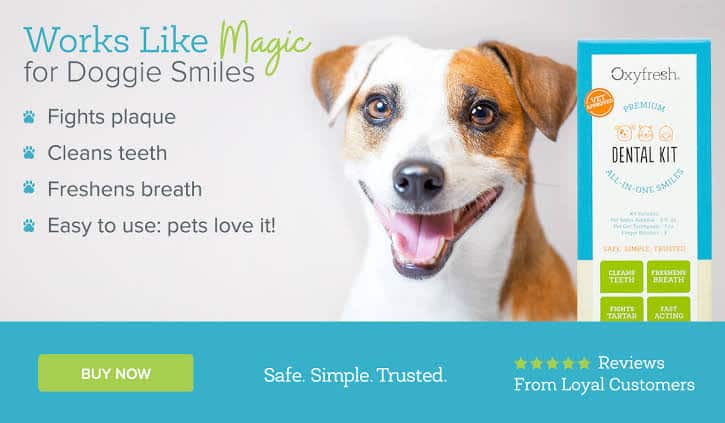
Expert Tips For Maintaining Canine Oral Health
Ensuring proper oral health is crucial for our canine companions. Just like humans, dogs can suffer from dental issues that may impact their overall well-being. Let’s explore expert tips to help you maintain your dog’s oral health, keeping their teeth and gums in top condition.
- Regular Brushing: One of the most effective ways to prevent dental problems in dogs is regular brushing. Use a dog-specific toothbrush and toothpaste to clean their teeth at least 2-3 times a week. Start slowly, allowing your dog to get accustomed to the process, and make it a positive experience with treats and praise.
- Regular Veterinary Check-ups: Schedule regular check-ups with your veterinarian to monitor your dog’s oral health. Professional dental cleanings may be recommended to address any issues that brushing alone can’t tackle. Your vet can also provide advice on specific dental care routines tailored to your dog’s breed and age.
- Be Aware of Warning Signs: Stay vigilant for signs of dental issues, including bad breath, swollen gums, difficulty chewing, or changes in eating habits. Early detection of problems allows for prompt intervention, preventing more severe dental issues down the line.
- Avoid Human Dental Products: Never use human toothpaste or dental products on your dog. These may contain ingredients harmful to pets. Stick to products specifically designed for canine dental care.
Frequently Asked Questions
Why Is Dental Care Essential For Dogs?
Regular dental care is crucial for preventing oral health issues in dogs, such as gum disease and tooth decay. It also contributes to their overall well-being and longevity.
What Makes “The Ultimate Dog Tooth Brushing Kit” Professional-Grade?
Our kit includes specially designed toothbrushes, veterinary-approved toothpaste, and comprehensive instructions, ensuring a thorough and effective teeth-cleaning process for your canine companion.
How Often Should I Brush My Dog’s Teeth?
For optimal oral health, aim to brush your dog’s teeth at least 2-3 times per week. However, the frequency may vary based on your dog’s breed, age, and overall dental health.
Can I Use Regular Toothpaste For My Dog?
No, it’s essential to use toothpaste specifically formulated for dogs. Human toothpaste can be harmful to dogs due to its fluoride content and other ingredients that may be toxic to them.
My Dog Resists Tooth Brushing. Any Tips?
Start slowly by letting your dog get comfortable with the toothbrush and paste. Gradually increase the duration and make the experience positive with treats and praise. Patience is key.
Are There Alternative Dental Care Methods For Dogs?
While brushing is ideal, dental chews, toys, and certain diets can complement oral care. However, they should not replace regular brushing for optimal results.
Conclusion
“The Ultimate Dog Tooth Brushing Kit: A Professional’s Guide To A Cleaner Canine Smile” provides a comprehensive and expertly curated solution for maintaining your dog’s dental health. With its well-designed tools and insightful guide, this kit offers a valuable resource to ensure a healthier and happier smile for your furry friend.

